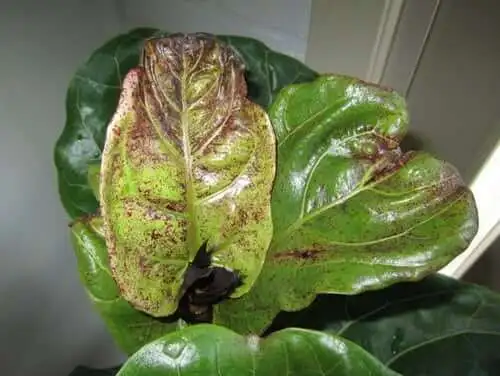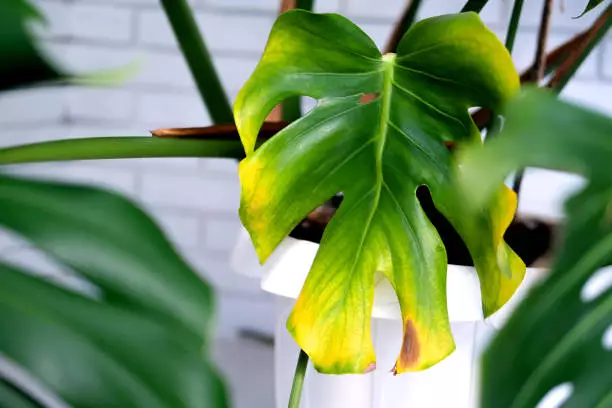Spider plants, scientifically known as Chlorophytum comosum, are popular houseplants known for their easy-to-care nature and air-purifying abilities. These plants originate from tropical and southern Africa, boasting long, arching leaves with a green and white striped pattern. They also produce tiny white flowers on long, wiry stems called inflorescences. With minimal care requirements, spider plants make an excellent choice for both plant enthusiasts and beginners alike.
One notable benefit of spider plants is their ability to improve indoor air quality. They have been found to effectively remove pollutants like formaldehyde, benzene, and carbon monoxide from the air, contributing to a healthier home environment. Additionally, spider plants provide a touch of nature in living spaces, which is known to boost mood and overall well-being.
Not only do spider plants enhance the aesthetics and air quality of indoor spaces, but they also offer numerous benefits to other plants and the surrounding ecosystem. For instance, spider plants can help prevent soil erosion and deter pests in the garden. By integrating spider plants into your home or garden, you can enjoy their many advantages and contribute to a healthier, greener environment.
Air Purification Benefits
NASA Clean Air Study
The NASA Clean Air Study has shown that spider plants are effective in removing air pollutants such as formaldehyde, benzene, toluene, xylene, and trichloroethylene. These pollutants can come from everyday household items like cleaning products and building materials. Spider plants are capable of absorbing these chemicals through their leaves, improving the indoor air quality.
Removal of Airborne Irritants
In addition to removing harmful chemicals, spider plants are also known to filter common airborne irritants. They can help in the reduction of:
- Pollen: A common allergen, causing seasonal allergies in many individuals.
- Dust mites: Microscopic organisms that can cause respiratory issues and allergies.
- Mold spores: Fungi that can contribute to respiratory problems and trigger allergies.
- VOCs (Volatile Organic Compounds): Gases emitted by various household products and materials that can have harmful health effects.
By absorbing these irritants and pollutants, spider plants can provide a natural air purification solution for homes and offices, contributing to a healthier environment. They also help increase oxygen levels in indoor spaces, improving overall air quality and creating a more comfortable living and working atmosphere.
Health Benefits
Reducing Anxiety and Stress
Spider plants are known for their ability to help reduce anxiety and stress levels. Studies have shown that being around plants can lower cortisol levels, which are often associated with stress. Having a spider plant in your home or workspace can create a calming environment, helping to relieve tension and promote a feeling of well-being.
Furthermore, spider plants are effective in removing toxins and pollutants from the air, like formaldehyde and benzene. This leads to improved air quality, which directly contributes to reduced stress and increased mental clarity.
Promoting Better Sleep
Adding a spider plant to your bedroom can also enhance sleep quality. It absorbs carbon dioxide and releases oxygen throughout the night, providing a fresher and healthier sleeping environment. Moreover, the soothing green foliage of the spider plant can aid in calming the mind and promoting relaxation, making it easier for individuals to fall asleep and stay asleep.
Decreasing Pain and Fatigue
Spider plants can help alleviate pain and boost energy levels. Researchers have found that patients in hospital rooms with plants experienced reduced pain levels, less fatigue, and lower blood pressure compared to those without plants. By incorporating spider plants into living spaces, individuals can benefit from these health advantages that extend beyond just aesthetics.
In conclusion, the spider plant offers numerous health benefits, including reducing anxiety and stress, promoting better sleep, and decreasing pain and fatigue. Investing in a spider plant can have a positive impact on one’s physical and mental well-being.
Care and Maintenance
Caring for a spider plant is generally simple and requires only a few essential steps. In this section, we will cover the important aspects of care and maintenance, including watering requirements, light and temperature needs, soil and fertilizing, as well as pruning and propagation.
Watering Requirements
Spider plants are quite adaptable to different watering conditions. In general, they prefer to be kept evenly moist but not overly wet. Overwatering can lead to root rot, while underwatering can cause the leaves to become dry and brown. To strike a balance, it’s important to allow the top inch of soil to dry out between waterings. Additionally, spider plants benefit from higher humidity, so misting the leaves occasionally can help maintain a healthy and vibrant plant.
Light and Temperature Needs
Spider plants thrive in bright, indirect sunlight. Direct sunlight may scorch the leaves, whereas insufficient light may lead to a pale green color and reduced growth. The ideal positioning for a spider plant is in a well-lit area, away from direct sun exposure. As for temperature, these plants typically do well in indoor conditions, with a temperature range between 60-75°F (15-24°C).
Soil and Fertilizing
A well-draining potting mix is essential for spider plant care. A mixture of peat moss, perlite, and vermiculite can be used to create an appropriate soil medium. Fertilizing your spider plant is also crucial for its growth and overall health. Use a balanced, water-soluble fertilizer every 4-6 weeks during the growing season, and reduce the frequency to every 8-10 weeks during the cooler months.
Pruning and Propagation
Pruning spider plants is essential for maintaining their appearance and encouraging growth. Remove any yellow, brown, or dead leaves by cutting them off at the base using clean, sharp scissors. To propagate your spider plant, simply remove a plantlet from the mother plant and place it in a small pot with moist potting mix. Keep the soil consistently moist until the roots are well-established, which usually takes two to four weeks.
By following these guidelines, you can successfully care for and maintain your spider plant, ensuring it remains a healthy and attractive addition to your indoor plant collection.
Suitability and Ease of Cultivation
Pet-Friendly Plant
One of the key benefits of the spider plant (Chlorophytum comosum) is its pet-friendly nature. Many houseplants may contain substances that are toxic to pets, but this is not the case with spider plants. According to the ASPCA, they are non-toxic to both cats and dogs, making them an ideal choice for pet owners.
Low-Maintenance Houseplant
Spider plants are known for their ability to thrive under various light conditions, making them perfect for indoor cultivation. They can tolerate both bright and low light environments, and their adaptability makes them suitable for various room types, including the bedroom. Additionally, they are resilient to neglect and can withstand occasional missed waterings, making them a fantastic low-maintenance option for busy individuals.
Ideal for Hanging Baskets and Decoration
One of the unique features of spider plants is their production of small offshoots or plantlets called spiderettes. These spiderettes grow on the ends of arching stems and create an attractive cascading effect that looks stunning in hanging baskets. Furthermore, spider plants are known to have air-purifying properties, as they can help remove chemicals like formaldehyde and xylene from the air, contributing positively to indoor air quality.
Various Varieties and Appearances
Spider plants come in various varieties, each with a distinct appearance. The most common variety is the variegated spider plant, which features green leaves with white stripes. Other varieties include the ribbon plant, which has thin leaves and a lighter green color, and the green spider plant, known for its solid green leaves.
These plants are native to Southern Africa and have been cultivated in various parts of the world due to their ornamental value and adaptability. By selecting different varieties of spider plants, you can easily add diversity and visual interest to your indoor garden.
Propagation and Growth
Fast-Growing Nature
Spider plants are known for their fast-growing nature and adaptability to various environments. They thrive in tropical and sub-tropical regions, often growing rapidly in these favorable climates. Spider plant care is relatively easy, as their growth rate allows them to withstand occasional neglect. Proper care includes placing the plant in well-draining soil with drainage holes to prevent the roots from getting too wet, which can lead to root rot.
Effective Propagation Techniques
Propagation is a simple process for spider plants, as they naturally produce “baby” plants called plantlets on long stems, known as runners. These plantlets can be easily removed from the parent plant and placed in water or moist soil to establish roots. Once the roots have developed, the plantlet can be transferred to a pot with drainage holes, ensuring proper spider plant care and reducing the risk of infestations.
In addition to propagating through plantlets, spider plants can also be propagated by division of the adult plant. The process involves separating the parent plant into smaller sections, each with its own root system. These smaller sections can then be planted individually, allowing the plant to quickly grow and fill its new environment.
Frequently Asked Questions
What makes spider plants beneficial for indoor air quality?
Spider plants are known for their ability to improve indoor air quality, as they can effectively remove common pollutants like formaldehyde and benzene. They absorb these pollutants through their leaves, which helps in creating cleaner and fresher air for the occupants of the space.
How do spider plants improve mental well-being?
By improving indoor air quality, spider plants can indirectly contribute to better mental well-being. Cleaner air typically leads to fewer health issues, such as allergies and respiratory problems, allowing individuals to experience reduced stress and an overall sense of well-being.
Do spider plants help absorb toxins?
Yes, spider plants can help absorb toxins found in indoor environments. They are particularly effective in removing pollutants such as formaldehyde, benzene, and xylene, which commonly originate from sources like furniture, carpets, and paints.
Can spider plants contribute to better sleep?
There is evidence to suggest that having spider plants in the bedroom may contribute to better sleep, as they produce oxygen at night. This increased oxygen level can help to improve overall air quality, which may lead to a more restful sleeping environment.
What is the role of spider plants in producing oxygen at night?
Spider plants have a unique ability to produce oxygen during the night, unlike most other plants that produce oxygen only during the day while photosynthesizing. This makes them especially beneficial for improving indoor air quality and providing fresh oxygen in the nighttime.
Do spider plants possess any medicinal properties?
Although there have been no extensive studies proving the medicinal properties of spider plants, they do possess some anecdotal benefits. Some people claim that spider plants are soothing and have anti-inflammatory effects, while their leaves have been used in folk remedies for ailments such as burns and wounds. However, it is essential to note that these claims are not scientifically proven, and more research is needed before making definitive conclusions.



